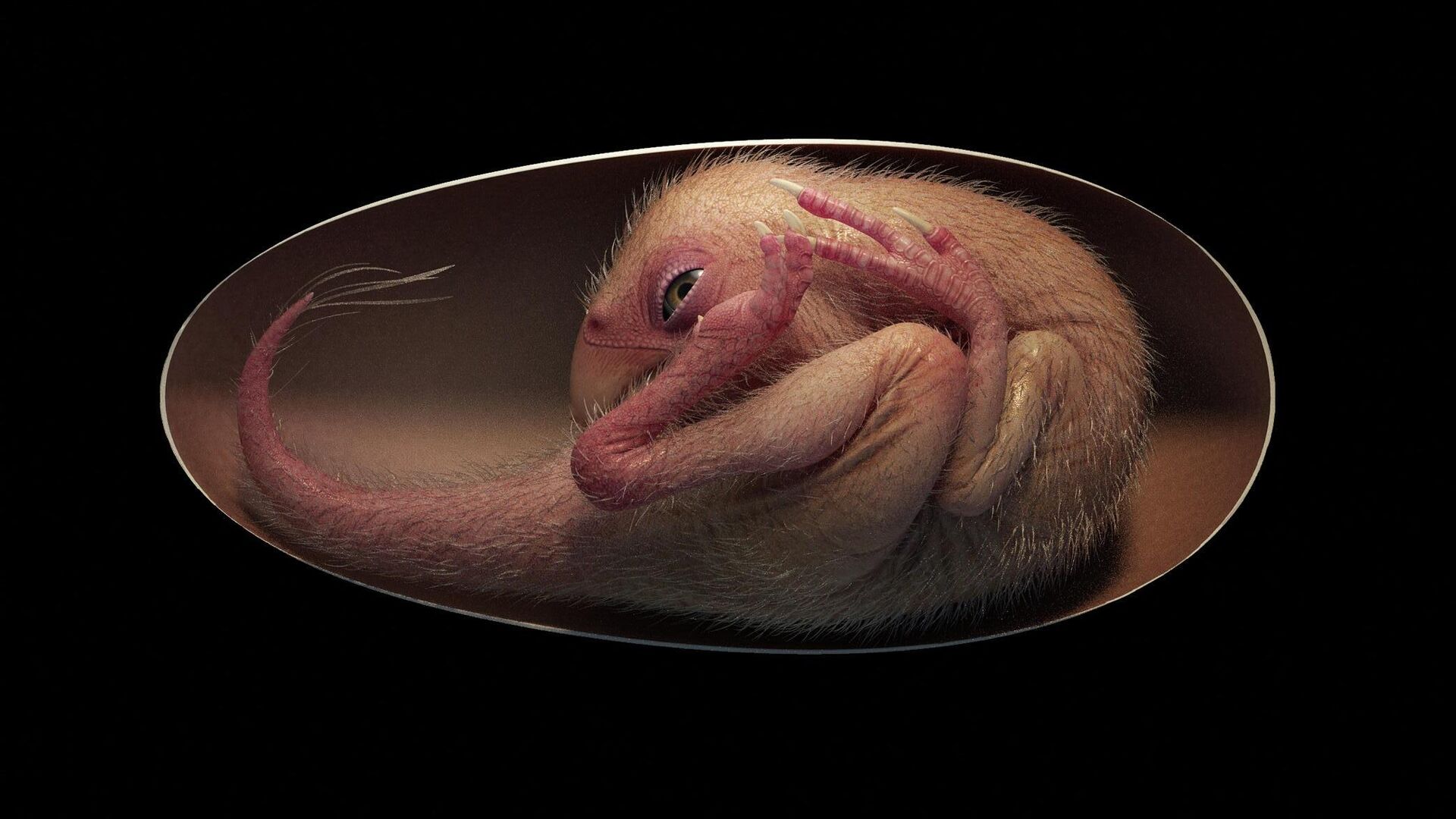Perfectly Preserved Dinosaur Embryo Inside Fossilised Egg Discovered in China

© AFP 2023 / UNIVERSITY OF BIRMINGHAM
Subscribe
According to new findings published in the iScience journal, the fossilised egg is about 17 cm long and the baby dinosaur curled inside it is estimated to have a length of 27 cm from head to tail.
In a rare discovery, paleontologists have found a never-before-seen fossil of a complete baby dinosaur curled up inside an egg in Ganzhou, China.
The palaeontologists named the 70-million-year-old fossilised embryo “Baby Yingliang” after the Yingliang Stone Nature History Museum in China, where it was stored.
According to the study published in iScience, the egg was first uncovered in 2000, but it was put in storage for 10 years by museum staff, only to find it again during construction work last year.
The pictures of the embryo showcase the fossil of a curled-up baby dinosaur inside its six-inch eggshell.
Palaeontologist Professor Steve Brusatte, who was a part of the research team, tweeted that the embryo was on the brink of hatching.
It's one of the most stunning dinosaur fossils I've ever seen. But it's also important: it tells us that the 'tucking postures' of today's birds--in which they curl their head under their arms and legs before hatching--first evolved in their dinosaur ancestors. pic.twitter.com/Oc1An63E4J
— Steve Brusatte (@SteveBrusatte) December 21, 2021
Co-author of the study Darla Zelenitsky said that finding embryonic dinosaur fossils in a distinctive posture during hatching is extremely rare.
Zelenitsky shared that the stage at which embryonic dinosaur fossil was, looked like that of a modern bird, but it has small arms and claws rather than wings.
"It is an amazing specimen. I have been working on dinosaur eggs for 25 years and have yet to see anything like it", Zelenitsky told CNN.
Rare well-preserved dinosaur embryo has a bird-like pre-hatching posture, raising the possibility that this behavior first evolved among non-avian theropods during the Cretaceous. Learn more from this study in @iscience_cp: https://t.co/EPykTzjbyS@FionMaWS pic.twitter.com/DxRRzZX0ZI
— Cell Press (@CellPressNews) December 21, 2021


